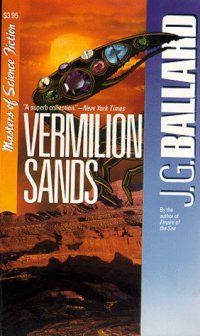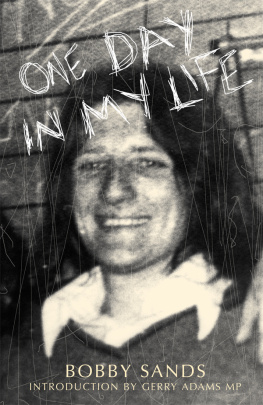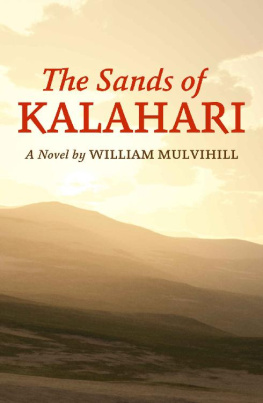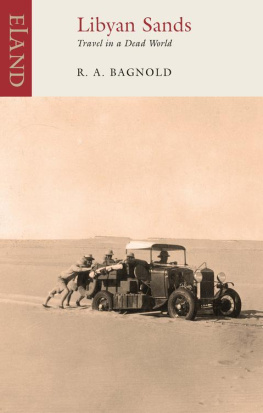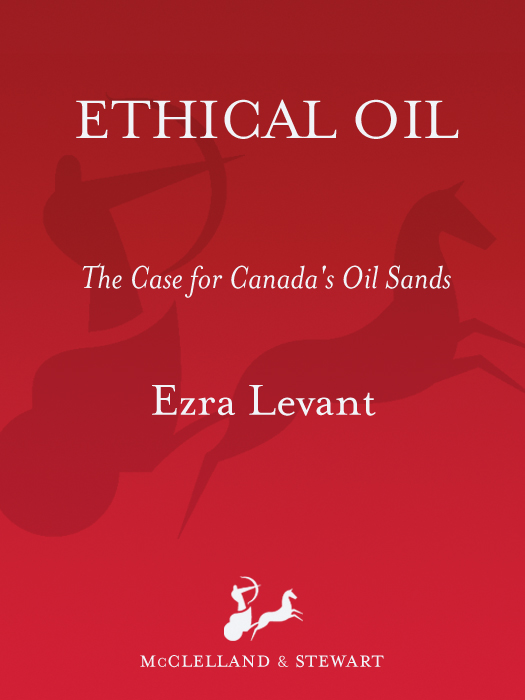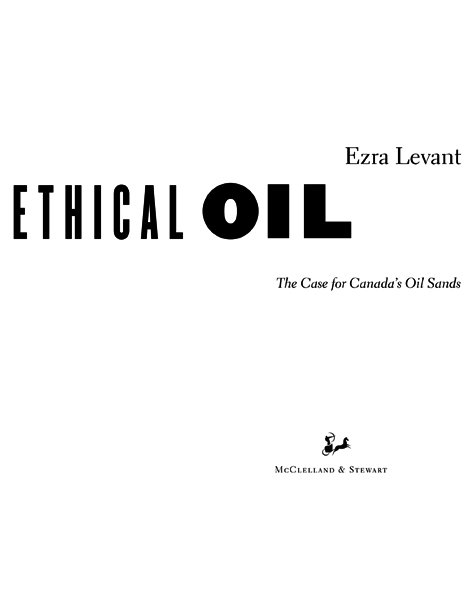Copyright 2010 by Ezra Levant
All rights reserved. The use of any part of this publication reproduced, transmitted in any form or by any means, electronic, mechanical, photocopying, recording, or otherwise, or stored in a retrieval system, without the prior written consent of the publisher or, in case of photocopying or other reprographic copying, a licence from the Canadian Copyright Licensing Agency is an infringement of the copyright law.
Library and Archives Canada Cataloguing in Publication
Levant, Ezra, 1972
Ethical oil : the case for Canadas oil sands / Ezra Levant.
eISBN: 978-0-7710-4642-1
1. Petroleum industry and trade Moral and ethical aspects. 2. Organization of Petroleum Exporting Countries. 3. Petroleum Purchasing Moral and ethical aspects. 4. Petroleum industry and trade Environmental aspects. 5. Human rights. I. Title.
HD9560.5.L45 2010 178 C2009-905146-X
We acknowledge the financial support of the Government of Canada through the Book Publishing Industry Development Program and that of the Government of Ontario through the Ontario Media Development Corporations Ontario Book Initiative. We further acknowledge the support of the Canada Council for the Arts and the Ontario Arts Council for our publishing program.
McClelland & Stewart Ltd.
75 Sherbourne Street
Toronto, Ontario
M5A 2P9
www.mcclelland.com
v3.1
ALSO BY EZRA LEVANT
Shakedown: How Our Government Is Undermining Democracy in the Name of Human Rights
To my family, for their patience and support
CONTENTS
Introduction
THE SHOCKING TRUTH ABOUT THE OIL SANDS
C anadas tar sands are the largest industrial project in the world. Were not talking factory large or city-block large. Were talking as big as the entire state of Florida large 140,000 square kilometres of toxic sludge, where more than a hundred oil companies work around the clock to literally boil the oil out of the ground.
What they dont turn into open-pit mines like something out of Mordor, in The Lord of the Rings is left as giant toxic lakes, which the oil companies cynically call ponds. Theyre so large, theyre even visible from space, so its no wonder that migrating birds sometimes stop to rest on them. Those unlucky enough to make that mistake and scientists estimate that the number will be in the tens of millions will only do so once.
Its not just birds that are in jeopardy. Fish are too. Deformities are commonplace; one fish was recently found downstream from the oil sands with a grotesque second jaw. Aboriginal peoples, who have lived in the region for centuries before the white man came with fossil fuel imperialism, say that the fish just arent the same anymore, and the rivers themselves smell of poison. Whether those rivers will even survive is an open question: to boil each barrel of oil out of the tar sands takes five barrels of water. And new tar sands plants will add more than 1 million barrels of oil a day in production. Do the math yourself: the mighty Athabasca River is about to become a small, dirty creek.
Of course, whats poisonous for fish and fowl is poisonous for people too. In Fort Chipewyan, a village of twelve hundred souls just downstream from the tar sands, half a dozen cases of a rare bile duct cancer, called cholangiocarcinoma, were confirmed by John OConnor, a soft-spoken doctor who ministers to the largely Aboriginal town. By tragic coincidence, Dr. OConnors own father passed away from the same affliction.
Is six cases of bile duct cancer unusual for a village of twelve hundred? Put it this way: its so rare, your chances of getting it are one in one hundred thousand. And Fort Chip has it six times out of twelve hundred people. Thats about as likely to happen in nature as playing a game of golf and getting eighteen holes in one, in a row. No wonder that when Dr. OConnor blew the whistle on the tar sands as the culprit, he was hit with a series of ethics complaints designed to muzzle him all of them filed by doctors working for the federal government. Theres just too much money at stake in the tar sands to let one physicians conscience stop progress.
And then theres the tar sands dirtiest little secret: its the filthiest oil in the world when it comes to greenhouse gases (GHGS) . No other method of oil production in the world comes close to the tar sands in terms of CO2 emissions. The tar sands arent just poisoning the Aboriginals in Fort Chip. Theyre poisoning our very planet and threatening to turn Canada into a climate criminal.
It shouldnt be surprising. The oil sands are brought to you by the same people who gave us the Exxon Valdez, the worlds largest oil spill. Where normal people smell pollution, they smell money. But dont think any of that money is actually spread around. What isnt expatriated back to the oil companies U.S. corporate headquarters goes largely untaxed the inevitable result of having Prime Minister Stephen Harper, the son of an Imperial Oil executive, setting tax policy. Its not just the oil thats flowing to the United States. Its the money too.
Whats left behind, besides environmental catastrophe, in the oil sands headquarters of Fort McMurray are all the social ills of a boom town the violence, the mistreatment of women, the addiction problems, and an artificially high cost of living that makes almost anyone with a job part of the working poor.
Its not good enough for a country like Canada to care only about financial goals. A country, like a person, has a soul too. The tar sands are turning our collective soul as black as bitumen. Its time to do the moral thing, for a change. Weve got to shut down the tar sands to save Canada.
Wow. The oil sands are embarrassing. Not just for Albertans but for anyone in Canada who cares about the environment, or Aboriginal rights, or our international reputation.
Except, its not true. Every single fact in the preceding pages is false. Every one of them.
The tar sands or the oil sands, as theyre more commonly called nowadays (tar, a product of distilled coal, just isnt accurate, no matter what certain antioil sands group claim; this is bitumen in Albertas ground: a thick oil) are, in fact, huge.
The oil sands do cover an area the size of Florida. But only 2 per cent of that area will ever be mined. The rest of the oil sands are just too deep theyll be steamed and pumped out of the ground, not unlike the way normal oil is. Forests will still grow and critters will still frolic on the land high above the drilling. And even the 2 per cent that is mined will be reclaimed once the oil is pumped out its the law in Alberta, and the first oil sands mine reclamation projects have already been certified. Theyre gorgeous hiking trails now, with forests and pristine lakes.
Its true, there is oil seeping into the rivers north of Fort McMurray and sometimes the air smells like sulphur and the water is bitter. And thats how its been for millennia Aboriginals traditionally used the thick bitumen that bubbled out of the ground to waterproof their canoes. There is so much oil oozing naturally into the environment that sometimes the water quality adjacent to an oil sands operation is cleaner than the water upstream, where a seam of bitumen exposed on the riverbank has been leeching into the water for thousands of years.
That double-jawed fish supposedly deformed by Albertas water? When it was finally inspected by scientists, they discovered it was a dead goldeye whose naturally bony tongue had punctured through its decomposed jaw floor, as commonly happens with dead goldeye. Stinky water? You bet a natural phenomenon that early European explorers wrote about in their journals too.


